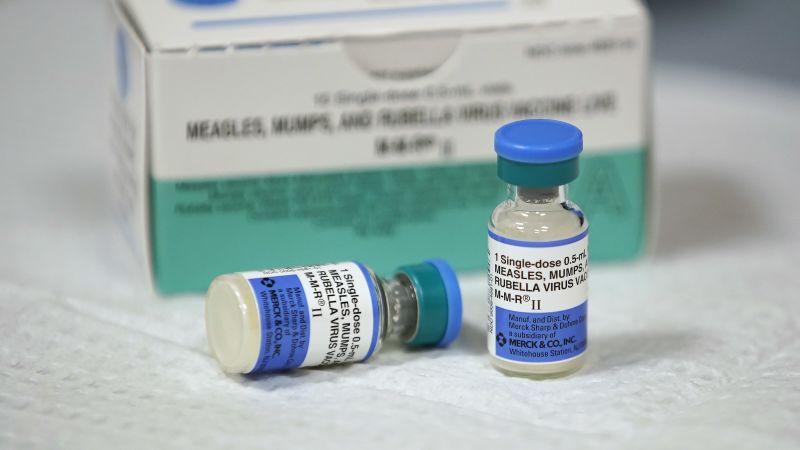The Mortgage Bankers Association’s (MBA) index of mortgage applications jumped 7.1% for the week ended March 8, compared with a 9.7% increase the previous week, according to new data published Wednesday.
The data also showed that the average rate on the popular 30-year loan dropped to 6.87% last week.
“Mortgage rates dropped below 7% last week for most loan types because of incoming economic data showing a weaker service sector and a less robust job market, with an increase in the unemployment rate and downward revisions to job growth in prior months,” said Mike Fratantoni, MBA’s chief economist.
MORTGAGE CALCULATOR: SEE HOW MUCH HIGHER RATES COULD COST YOUHousing demand had ground to a halt earlier this year as rates moved higher, but it is stirring back to life as rates start to fall.
Applications for a mortgage to purchase a home rose 5% from the previous week.
Application volume is down 11% compared with the same time last year.
Demand for refinancing also climbed higher last week, rising 12% from the previous week, according to the survey.
Compared with the same time last year, refinance applications are up 5%.
“While these percentage increases are large, the level of refinance activity remains quite low, and we expect that most of this activity reflects borrowers who took out a loan at or near the peak of rates in the past two years,” Fratantoni said.
WHY ARE GROCERIES STILL SO EXPENSIVE?
The interest rate-sensitive housing market has cooled rapidly as a result of the Federal Reserve’s aggressive tightening campaign.
Policymakers lifted the benchmark federal funds rate 11 times over the course of 16 meetings in an attempt to crush stubborn inflation and slow the economy.
Central bank officials have opened the door to cutting interest rates this year but indicated they will not do so until they are confident that inflation is conquered.
“The committee does not expect that it will be appropriate to reduce the target range until it has gained greater confidence that inflation is moving sustainably toward 2%,” Fed Chair Jerome Powell said last week while testifying on Capitol Hill.
GET FOX BUSINESS ON THE GO BY CLICKING HERENow, most economists expect the cuts to begin in June amid signs that inflation remains abnormally high.
Higher mortgage rates have not only weighed on consumer demand, they have limited inventory.
That is because sellers who locked in a low mortgage rate before the COVID-19 pandemic have been reluctant to sell with rates continuing to hover near a two-decade high, leaving few options for eager would-be buyers.
Available home supply remains down a stunning 34.3% from the typical amount before the pandemic began in early 2020, according to a separate report published by Realtor.com.
When mortgage rates fell below 7% for the first time in over a month last week, a crucial indicator of home-buying applications increased.
According to new data released on Wednesday, the Mortgage Bankers Association’s (MBA) index of mortgage applications increased by 7 points1 percent for the week ending March 8, up from a 9 points7 percent increase the week before.
Additionally, the data indicated that last week, the average rate on the widely used 30-year loan decreased to 6.87 percent.
According to Mike Fratantoni, chief economist at MBA, “incoming economic data showing a weaker service sector and a less robust job market, with an increase in the unemployment rate and downward revisions to job growth in prior months” is what caused mortgage rates to drop below 7 percent last week for most loan types.
MORTGAGE CALCULATOR: DETERMINE YOUR POSSIBLE EXPENSES FROM HIGHER RATES.
As rates started to decline, housing demand, which had stagnated earlier in the year due to rising costs, is now reviving. Mortgage applications to buy a house increased by 5% from the week before. The number of applications received is 11% less than it was at this time last year.
A survey conducted last week revealed that demand for refinancing had increased as well, by 12 percent from the week before. Refinance applications are up 5% when compared to the same period last year.
The level of refinance activity is still relatively low, despite the significant percentage increases, and Fratantoni predicted that the majority of this activity would be accounted for by borrowers who obtained loans at or close to the peak interest rate during the previous two years.
Why do groceries still cost so much?
The Federal Reserve’s aggressive campaign of tightening policy has caused the interest rate-sensitive housing market to cool off quickly. Over the course of 16 meetings, policymakers raised the benchmark federal funds rate 11 times in an effort to combat persistent inflation and decelerate the economy.
Although they have said they will wait to lower interest rates until they are certain that inflation has been controlled, central bank officials have hinted that they may lower rates this year.
During his Capitol Hill testimony last week, Fed Chair Jerome Powell stated, “The committee does not expect that it will be appropriate to reduce the target range until it has gained greater confidence that inflation is moving sustainably toward 2 percent.”.
CLICK HERE TO ACCESS FOX BUSINESS ON THE GO.
The majority of economists now predict that the cuts will start in June despite indications that inflation is still unusually high.
In addition to dampening consumer demand, higher mortgage rates have also reduced supply. This is because there aren’t many options available for eager would-be buyers because sellers who locked in a low mortgage rate prior to the COVID-19 pandemic have been hesitant to sell even as rates are still close to a two-decade high.
According to a different report released by Realtor.com, the supply of available homes is still shockingly lower than it was before the pandemic started in early 2020—up 34.3%.




